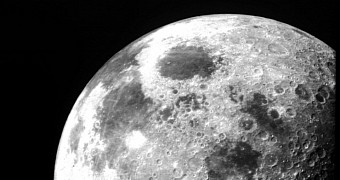The chemistry that takes place when the solar wind strikes the Moon surface was modeled by scientists.
They discovered that protons sent to the Moon interact with the surface’s electrons to create hydrogen (H) atoms.
The plentiful oxygen (O) atoms bonded in silica (SiO2) and other oxygen-bearing molecules that compose the lunar soil, or regolith, are then attracted by these atoms as they travel across the surface and latch onto them. Hydrogen and oxygen combine to form the hydroxyl (OH) molecule, which is a part of water, or H2O.
One of the most amazing discoveries made since Apollo was the discovery of water on the dry moon. Water has been found in permanently shaded craters at the lunar poles and, more recently, in Clavius, a large crater on the moon’s nearside that enjoys sunshine for two weeks out of every month, due to satellite mapping. Although water-rich lavas that erupted in the moon’s distant past could have also contributed, comets and meteoroids were most likely the source of the water that eventually froze into ice.

How Much Possibility Of Water Is There On The Moon?
Although the existence of water on the Moon has already been disputed since the 1970s, technological advancements only made it possible to determine its precise amount in 2008. The LCROSS satellite from NASA crashed into a permanently shadowed lunar crater the following year, ejecting a cloud of material that turned out to be remarkably rich in water ice. The layer of fine powder and rock fragments that covers the lunar surface is known as lunar bedrock, and it contains water as well as various hydrogen compounds (OH, CH, or H2).
These results support a model that predicts the polar regions of the Moon may contain far more water produced by the solar wind, the knowledge that might be highly helpful in formulating future lunar exploration missions. The future use of the water resources on the Moon is greatly impacted by this revelation. The water that is present in the lunar soil can also be easily extracted and utilized through particle sorting and heating.



